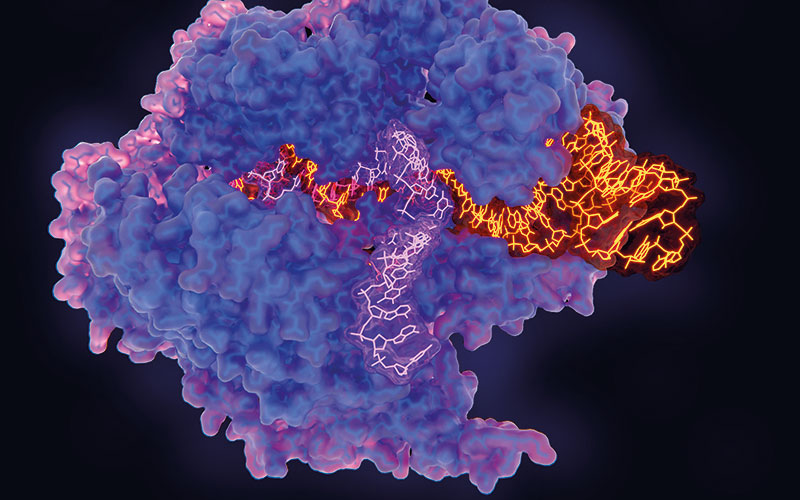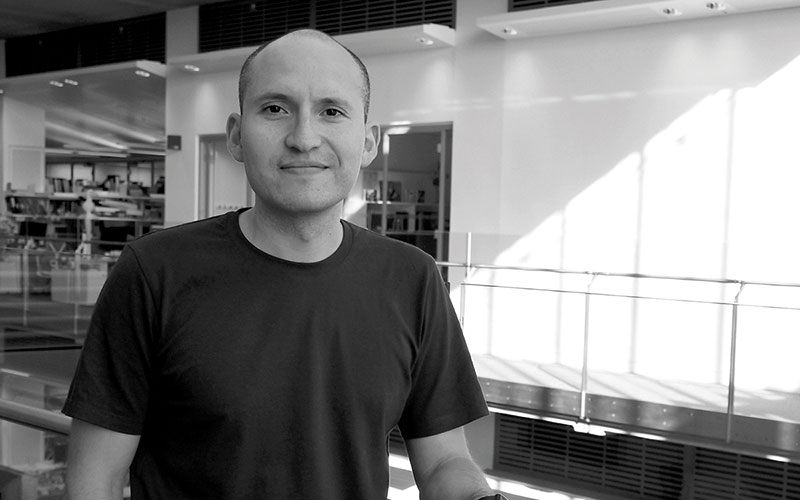Computational biologist Gregorio Alanis- Lobato highlights the need for greater awareness of and further research into the effects of CRISPR-Cas9 genome editing.

The discovery of the CRISPR-Cas9 gene editing technique in 2012 was hailed as one of the most significant finds in modern biology. The technology has since been advancing at a pace, and won the ultimate professional recognition in 2020 with the award of the Nobel Prize in Chemistry to the scientists who first developed the technique, Jennifer Doudna and Emmanuelle Charpentier.
CRISPR is shorthand for the DNA sequences known as “clustered regularly interspaced short palindromic repeats”. The key to the gene editing technique is the associated Cas9 protein, an RNA-based enzyme that can make precise cuts to DNA.
The inspiration for the CRISPR-Cas9 process came from a mechanism that immunological bacteria use to slice up invading viruses. Jennifer Doudna has likened the resulting gene editing technique to a “pair of molecular scissors” – it can make simple, clean and accurate changes to the DNA of virtually any organism, meaning its application is more or less boundless. Early research has concentrated on curing genetic conditions such as congenital blindness, treating cancer and producing specialised drugs. Human trials are underway and the therapies that emerge could soon arrive in clinics. Beyond that, the technology also could usher in a new age for agriculture and even building materials. Little wonder it has generated such excitement.
Mutations
But the charging progress of CRISPR-Cas9 was slowed by a small tap to the brakes last month with the publication in PNAS of a paper from the Francis Crick Institute called “Frequent loss-of-heterozygosity in CRISPR-Cas9–edited early human embryos”.
The researchers from the Francis Crick Institute based their work on a 2017 study at the institute’s Human Embryo and Stem Cell Laboratory that had used CRISPR-Cas9 to examine the role of pivotal genes during the first few days of embryo development. Using a specially developed computational pipeline to analyse those previous results, the new research found that the CRISPR-Cas9 technique brought about unintended mutations to the DNA. Most of the mutations detected were small, but, more significantly, around 16% of the samples showed larger mutations that conventional means to assess DNA change would have missed.
The lead author of the paper, Gregorio Alanis-Lobato, former postdoctoral training fellow at the Crick and now principal computational biologist at Boehringer Ingelheim Pharma in Germany, says that the impetus for this new research was a growing body of work that has been highlighting the tendency of CRISPR-Cas9 to cause mutations.
“Instead of affecting only one gene, you might be affecting two or three genes”
Early stages of development
“After that 2017 study, papers started to come out reporting that CRISPR can induce unexpected events on the on-target side. Normally with CRISPR, you delete or insert a couple of base pairs on your target location. When you do this, it is normally at a site that is very important for the gene that you are a targeting. So when that gene is translated into protein, it cannot perform its function. This is how you basically knock it out. But now the problem, when you have large divisions that are unexpected, instead of affecting only one gene, you might be affecting two or three genes in the vicinity of the target locus.”
Any alteration to other genes close by is a far-from-desirable result. “It is really dangerous because, for example, if you have a gene that is very important for the development of limbs and it gets unintentionally removed, this can be very problematic in terms of the potential development of an organism. So it was really important to go back to the 2017 data and see if CRISPR induced large deletions in the human embryo context, but also to see if the interpretation of the results from that study were correct.”
Going back to those findings revealed the large mutations that had previously escaped attention. “We found that in 16% of the cases, these events occurred,” says Alanis-Lobato. “This can happen in the human embryo. There are groups that want to use CRISPR-Cas9 for gene editing or for gene therapy and to fast-track its use in the clinic. This is in the early stages of development. With this result, a lot more research is needed. We need to understand better how the early human embryo area reacts to these CRISPR double strand breaks. Probably the 16% doesn’t sound like a big number, but if you want to take these technologies to the clinic it’s actually a very big number.”
While the Crick work focused on the effects of CRISPR-Cas9 on early-stage human embryos consisting of around 200 cells (such research is heavily regulated in the UK), the message remains wholly relevant to the wider field of CRISPR research. “We think that these effects are possible indifferent contexts. If you’re doing an experiment and you think that you’re knocking out a gene, you have to make sure that you are affecting only that gene, otherwise your results and conclusions can be wrong. That’s why we also published a set of computational pipelines, so that other researchers check for these effects after you do your CRISPR experiment.”
More research
None of this should be taken to suggest that the technique is fundamentally flawed or that its potential is over-stated. “I think CRISPR is an amazing technique for understanding gene function,” says Alanis-Lobato. “It has big promise for gene therapy and much more. What we’re trying to say is that the technique should be improved. Be careful, because our results show that unintended consequences are possible, and we have to do more research and understand why it is happening.
“This is how science should work, right? We have this novel technology, and we probably don’t understand 100% how it works in different biological contexts. It has certain levels of efficiency, but it also has its limitations. And that is why we are scientists – to find ways to circumvent those limitations. It’s something that could be improved on. We have to work on it.”

2005-09, computer systems engineering, Instituto Politécnico Nacional, Mexico
2009-14, MSc & PhD, computer science, King Abdullah University of Science and Technology, Saudi Arabia
2015-18, postdoctoral fellow, Johannes Gutenberg University, Germany
2019-20, postdoctoral training fellow, Human Embryo and Stem Cell Lab, The Francis Crick Institute
Image credit | Shutterstock




